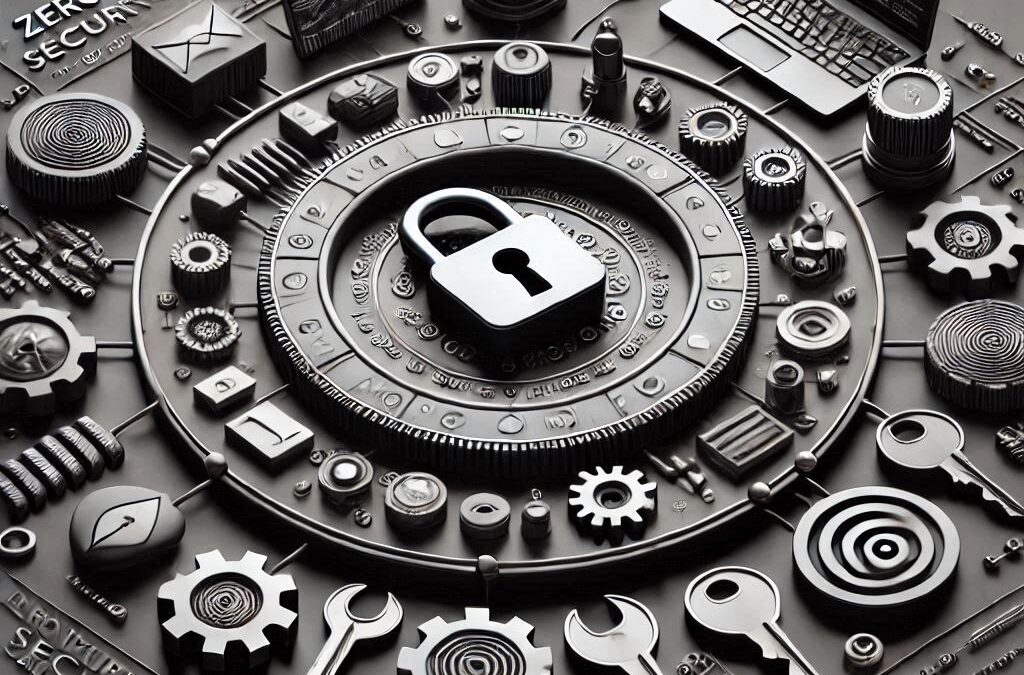In today’s rapidly evolving digital landscape, traditional security methods are no longer sufficient. With cyber threats becoming more sophisticated and the boundaries of corporate networks expanding due to remote work and cloud services, businesses need a robust security framework. This is where the Zero Trust Security Model comes into play—a modern approach to cybersecurity that ensures your enterprise remains resilient against threats.
What is the Zero Trust Security Model?
The Zero Trust Security Model operates on a simple yet profound principle: “Never trust, always verify.” Unlike traditional security models that rely on perimeter defenses, Zero Trust assumes that threats can exist both outside and inside the network. It requires continuous verification of users and devices, regardless of their location, before granting access to sensitive resources.
Key Principles of Zero Trust
- Verify Explicitly: Always authenticate and authorize users and devices based on all available data points, including identity, location, device health, and more.
- Least Privilege Access: Grant users and applications the minimum level of access they need to perform their tasks, reducing the attack surface.
- Assume Breach: Operate with the assumption that a breach is inevitable and ensure micro-segmentation and real-time monitoring are in place to limit its impact.
Why Zero Trust Matters for Management
As a decision-maker, your role extends beyond day-to-day operations. Implementing Zero Trust is not just an IT decision—it’s a strategic business initiative. Here’s why:
- Enhanced Security: Protect your organization against ransomware, phishing attacks, and insider threats.
- Regulatory Compliance: Meet stringent security standards required by industry regulations such as GDPR, HIPAA, or PCI-DSS. These regulations are designed to protect sensitive information and ensure data privacy. For instance, GDPR mandates strict data handling practices for EU residents’ personal information, HIPAA safeguards patient healthcare data in the U.S., and PCI-DSS establishes secure protocols for handling credit card transactions. By complying with these, businesses not only mitigate risks but also build trust with their customers.
- Cost Efficiency: Reduce long-term costs by minimizing the risk of data breaches and optimizing security investments.
- Business Continuity: Ensure seamless operations even during attempted breaches, maintaining trust with clients and stakeholders.
How Dgtia.com Can Help
At Dgtia.com, we specialize in providing cutting-edge solutions that align with the Zero Trust framework. Whether you’re looking to assess your current security posture or implement advanced security measures, we offer tailored services to:
- Evaluate your existing infrastructure for vulnerabilities.
- Design and deploy Zero Trust strategies that align with your business objectives.
- Provide ongoing support and monitoring to ensure your systems remain secure.
By partnering with Dgtia.com, you gain access to a team of experts dedicated to protecting your business in an ever-changing cyber landscape.
Steps to Implement Zero Trust
- Assess Your Assets: Identify critical data, applications, and services that require protection.
- Map Data Flows: Understand how data moves within and outside your organization.
- Deploy Multi-Factor Authentication (MFA): Strengthen identity verification processes.
- Adopt Micro-Segmentation: Isolate sensitive areas of your network to limit lateral movement.
- Monitor Continuously: Use AI-driven tools for real-time threat detection and response.
The Future of Enterprise Security
Zero Trust is not just a trend; it’s the future of enterprise security. For instance, Gartner predicts that by 2025, 60% of enterprises will phase out traditional security methods in favor of zero-trust frameworks, drastically reducing breach incidents. This shift underscores the model’s transformative impact on safeguarding sensitive data in today’s complex digital landscape. By adopting this model, you position your organization to tackle modern challenges with confidence, ensuring both security and operational efficiency.
Dgtia.com is committed to empowering businesses with the tools and strategies needed to thrive in the digital age. Together, let’s build a resilient and secure future for your enterprise.
Ready to transform your cybersecurity strategy? Visit Dgtia.com today and explore how we can help your organization implement the Zero Trust Security Model effectively.

